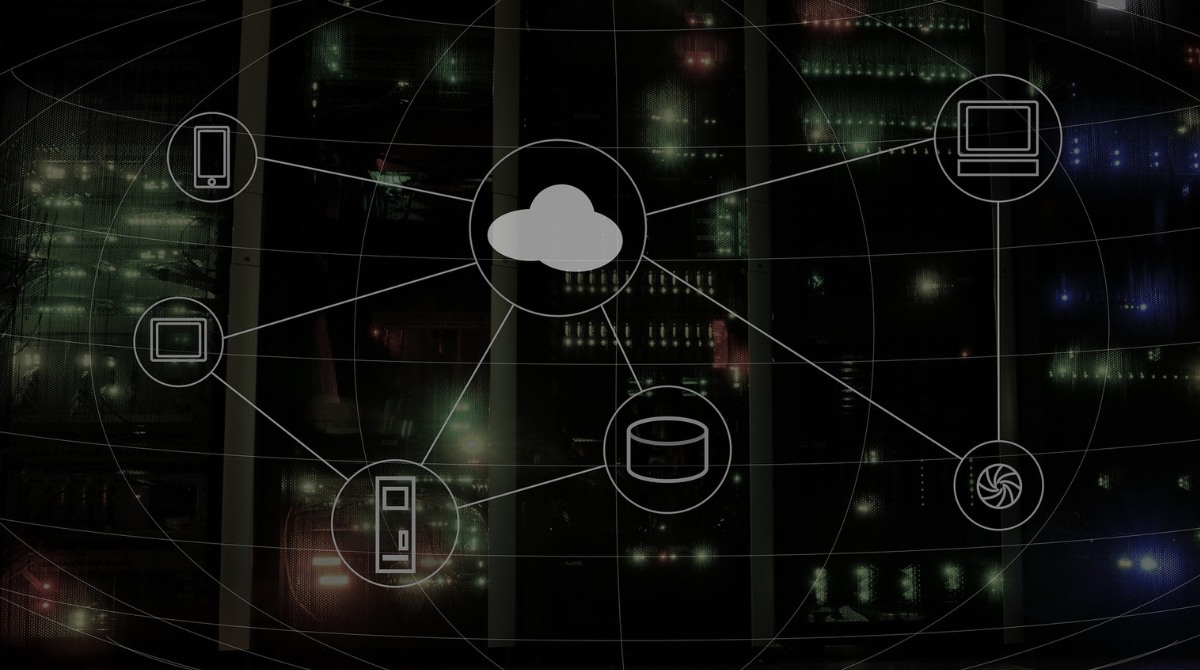Introduction
When it comes to running a Software-as-a-Service (SaaS) business, understanding the concept of Cost of Goods Sold (COGS) is crucial. COGS refers to the direct costs associated with the production and delivery of a product or service. While traditionally used in the manufacturing and retail industries, it also applies to the SaaS industry, albeit with some variations.
In order to accurately calculate the COGS for a SaaS business, it’s important to understand the different elements that contribute to it. In this article, we will explore the various components that are typically included in the COGS for SaaS companies.
By gaining a clear understanding of what is included in COGS, SaaS businesses can effectively analyze their costs and make informed decisions regarding pricing, profitability, and resource allocation.
Let’s dive into the details and explore the key components that make up COGS for SaaS.
Definition of COGS for SaaS
Cost of Goods Sold (COGS) for SaaS refers to the direct costs associated with delivering the software product or service to customers. While COGS is commonly used in manufacturing and retail industries to calculate the cost of producing physical goods, it adapts to the SaaS industry by considering the expenses involved in providing software solutions.
For a SaaS company, COGS represents the costs directly attributed to the creation, operation, and maintenance of the software product. It encompasses various expenses, such as software development, cloud infrastructure, licensing fees, customer support, and employee costs.
Calculating COGS for SaaS is vital because it helps SaaS companies understand the true cost of delivering their product and, in turn, assess their profitability. By accurately identifying and calculating these costs, businesses can make informed decisions on pricing strategies and optimize their operations.
It’s important to note that COGS for SaaS is different from the overall operating expenses (OPEX) incurred by the company. OPEX includes expenses such as marketing, sales, administrative costs, and general overhead, which are not directly tied to the production and delivery of the software product.
By segregating COGS from OPEX, SaaS companies can better evaluate the cost-effectiveness of their core product and focus on improving profitability and operational efficiency.
Now that we have a clear understanding of the definition of COGS for SaaS, let’s delve into the specific components that are included in these direct costs.
Direct Costs
Direct costs are a fundamental component of COGS for SaaS and include expenses that can be directly attributed to the production, delivery, and maintenance of the software product.
One significant direct cost in the SaaS industry is software development and maintenance. This includes the salaries of software engineers, developers, and testers, as well as the costs of software development tools and resources. Additionally, expenses for bug fixes, updates, and patches to the software all fall under this category.
Another major direct cost for SaaS companies is cloud infrastructure. As SaaS products are hosted on the cloud, businesses need to pay for cloud services such as servers, storage, bandwidth, and database management. These costs can vary based on factors such as usage, scalability, and data storage requirements.
Third-party services and licensing fees also contribute to direct costs. SaaS companies may leverage external services for features like payment processing, email delivery, SMS integration, or analytics. Correspondingly, licensing fees for utilizing third-party software or libraries in the development and functioning of the SaaS application are also included in direct costs.
Customer support and training costs are essential for ensuring a positive user experience. Direct costs associated with customer support include salaries of support staff, training programs, and software tools for managing customer inquiries and requests. These costs are incurred to ensure customer satisfaction, reduce churn, and maintain a good reputation.
Data storage and hosting costs are significant for SaaS companies, especially as data volumes increase. These costs cover expenses for storing and hosting customer data, backups, disaster recovery, and security measures. The pricing structure for data storage and hosting can vary depending on factors such as storage capacity, data transfer, and data retention policies.
Integration costs also play a role in direct costs. SaaS companies often need to integrate with other systems or platforms to provide enhanced functionality or to facilitate integration with third-party services. Direct costs associated with integration include development efforts, API usage fees, and any necessary customization or configuration.
Lastly, depreciation of equipment and software is considered a direct cost. As hardware and software become outdated, their value depreciates over time. SaaS companies must account for the depreciation of servers, networking equipment, and software licenses used in the delivery of their product.
Understanding and accurately tracking these direct costs are crucial for SaaS companies to evaluate their profitability and make informed decisions regarding pricing, resource allocation, and operational efficiency.
Software Development and Maintenance Costs
Software development and maintenance costs are a significant component of the direct costs in the COGS for SaaS. These costs encompass the expenses related to developing, enhancing, and maintaining the software product.
The salaries of software engineers, developers, and testers are a substantial part of these costs. SaaS companies need skilled professionals to design, develop, and test their software. The salaries and compensation packages for these technical experts contribute to the software development and maintenance costs.
In addition to human resources, the cost of software development tools and resources is another aspect to consider. SaaS companies often need to invest in software development frameworks, integrated development environments (IDEs), version control systems, project management tools, and testing suites. The costs associated with acquiring and licensing these tools are included in the software development and maintenance costs.
Continual software maintenance is necessary to ensure the product’s stability, performance, and security. SaaS companies allocate resources to address bug fixes, implement updates and patches, and improve the overall functionality of the software. The expenses incurred in maintaining and enhancing the software are part of the ongoing software development and maintenance costs.
Moreover, SaaS companies need to regularly adapt their software to stay in line with evolving industry standards and customer expectations. This may involve refactoring code, optimizing performance, and improving user experience. The costs associated with these efforts are also considered software development and maintenance costs.
Furthermore, testing activities such as unit testing, integration testing, and system testing are an integral part of software development and maintenance. SaaS companies allocate resources to validate the functionality and quality of the software. The costs related to testing activities, including the acquisition of testing tools, salaries of testers, and infrastructure for test environments, contribute to the overall software development and maintenance costs.
By accurately tracking and managing software development and maintenance costs, SaaS companies can make informed decisions about resource allocation, development timelines, and product updates. This helps them optimize their software development processes and ensure that their product meets customer expectations while remaining cost-effective.
Cloud Infrastructure Costs
Cloud infrastructure costs are a significant component of the direct costs in the COGS for SaaS. As SaaS products are hosted on the cloud, SaaS companies need to consider the expenses related to cloud services, including servers, storage, bandwidth, and database management.
One major factor contributing to cloud infrastructure costs is server usage. SaaS companies pay for the use of virtual machines or containers to run their applications. The cost is typically based on the number of server instances, the computing power allocated, and the duration of usage. As customer demand fluctuates, SaaS companies may need to scale their server usage up or down, affecting the associated costs.
Storage costs are another aspect of cloud infrastructure expenses. SaaS companies need to store and manage customer data, application files, and backups securely. The amount of data stored, the storage capacity allocated, and the data retrieval frequency all impact the storage costs. It is important to optimize data storage and implement efficient data archiving strategies to minimize unnecessary expenses.
Bandwidth costs come into play when transferring data to and from the cloud infrastructure. SaaS companies need to consider the data transfer bandwidth required for serving customer requests and facilitating efficient communication between the users and the software. The amount of data transferred and the geographic distance covered affect the bandwidth costs, making it necessary to optimize data usage and reduce unnecessary data transfer.
Database management costs are also included in cloud infrastructure expenses. SaaS companies utilize databases to store and retrieve their application’s data. The cost varies based on factors such as the type of database, the storage size, the number of transactions, and the backup frequency. Efficient database management practices, including data indexing and database optimization techniques, can help minimize these costs.
Additionally, SaaS companies may incur costs for cloud-related services such as load balancers, content delivery networks (CDNs), and security services. Load balancers distribute incoming traffic across multiple servers to ensure optimal performance and high availability, while CDNs help deliver static assets to users faster by serving them from geographically distributed edge servers. Security services provide protection against potential threats and vulnerabilities. The costs associated with these services contribute to the overall cloud infrastructure expenses.
Optimizing cloud infrastructure costs involves closely monitoring resource usage, right-sizing cloud instances, and leveraging cost-saving strategies offered by cloud service providers. By effectively managing cloud infrastructure costs, SaaS businesses can optimize their resource allocations, control expenses, and ensure scalability for their software products.
Third-Party Services and Licensing Fees
Third-party services and licensing fees are an important aspect of the direct costs in the COGS for SaaS. SaaS companies often rely on external services and software libraries to enhance their product’s functionality and provide a better user experience.
One major expense under this category is the utilization of third-party services. SaaS companies may integrate with payment processors, email delivery platforms, SMS gateways, analytics tools, or other service providers to offer additional features and functionalities to their customers. The costs associated with using these services, such as subscription fees or pay-per-use charges, are considered as direct costs for SaaS companies.
Licensing fees for third-party software or libraries also contribute to the direct costs. SaaS companies may leverage existing software solutions or libraries to accelerate their development processes or add specific functionalities to their product. The licensing fees required to use these pre-built software components or libraries are included in the direct costs.
It’s worth noting that the pricing model for third-party services and licensing fees can vary. Some may charge a flat fee, while others may have a tiered pricing structure based on usage or the number of customers. SaaS companies need to evaluate these costs, considering factors such as the value added by the third-party services and the potential return on investment (ROI).
When selecting third-party services or software libraries, it is crucial for SaaS companies to assess the reliability, scalability, and support provided by the vendors. Understanding the terms and conditions of the licenses and service agreements is also vital to avoid any unexpected costs or limitations.
Managing third-party service and licensing costs involves regularly evaluating the necessity and impact of each service or library, as well as exploring alternatives or negotiating pricing with vendors. By effectively managing these costs, SaaS companies can optimize their expenses while leveraging the benefits of third-party services and pre-built software components.
Customer Support and Training Costs
Customer support and training costs are integral to the direct costs in the COGS for SaaS. Providing excellent customer support and training is essential for ensuring customer satisfaction and retention.
One component of these costs is the salary and compensation of customer support staff. SaaS companies employ support representatives who handle customer inquiries, troubleshoot issues, and provide assistance. The wages of these employees, along with any additional benefits or incentives, contribute to the customer support costs.
Training programs and resources are another aspect of customer support and training costs. SaaS companies invest in training their customer support staff to ensure they have the necessary knowledge and skills to effectively assist customers. This may involve training on product features, troubleshooting techniques, communication skills, and customer service best practices. Additionally, SaaS companies may provide training materials and resources to their customers, such as user guides, tutorials, and online documentation.
Software tools and customer support platforms also contribute to customer support costs. SaaS companies utilize help desk software, ticketing systems, and live chat platforms to efficiently manage customer inquiries and provide timely responses. The costs associated with acquiring, licensing, and maintaining these tools are included in the overall customer support and training costs.
Moreover, SaaS companies may conduct training sessions or webinars for their customers to educate them about the product and its features. These training initiatives help customers make the most of the software and reduce the need for ongoing support. The expenses related to organizing and delivering these training sessions, including instructor salaries, training materials, and hosting costs, are part of the customer support and training costs.
Continuous improvement and monitoring of customer support processes are essential for managing customer support costs effectively. SaaS companies can utilize customer support analytics and feedback mechanisms to identify areas for improvement and optimize support processes. By promptly addressing customer inquiries and providing timely resolutions, businesses can minimize the need for extensive support and ultimately reduce costs.
Investing in excellent customer support and training is crucial for SaaS companies to build customer loyalty, reduce churn, and maintain a good reputation in the market. By managing customer support and training costs efficiently, businesses can provide exceptional service to their customers while managing their bottom line.
Data Storage and Hosting Costs
Data storage and hosting costs are an essential component of the direct costs in the COGS for SaaS. As SaaS companies handle large volumes of customer data and provide their software through online platforms, the expenses related to data storage and hosting infrastructure are significant.
One major factor contributing to these costs is the amount of data stored. SaaS companies need to allocate storage space for customer data, application files, backups, and other relevant information. The more data that is stored, the higher the storage costs will be. It is important for businesses to regularly assess data storage needs and optimize data storage practices to control these expenses.
The storage capacity allocated by the hosting provider also affects the costs. SaaS companies typically choose cloud service providers that offer flexible storage options to scale up or down based on the demand. The pricing structure may vary depending on the amount of storage capacity provisioned, including both active and archival storage.
Data retrieval and transfer costs are another aspect of data storage and hosting expenses. SaaS companies often need to transfer data to and from the hosting providers or within their own infrastructure for various purposes such as backups, disaster recovery, or data analysis. The bandwidth used for data transfer and retrieval impacts the overall costs, making it necessary to optimize data transfer practices and reduce unnecessary expenses.
Data security and compliance measures also contribute to the costs. SaaS companies need to invest in robust security measures to protect customer data from unauthorized access, breaches, or data loss. Implementing encryption, access controls, regular security audits, and compliance with relevant data protection regulations are essential but can add to the overall data storage and hosting costs.
Additionally, data storage and hosting costs may vary based on the geographic location of the hosting infrastructure. Hosting providers may charge different rates depending on the data center’s location, accessibility, and reliability. SaaS companies need to consider these factors and the potential impact on performance and compliance requirements when calculating their data storage and hosting expenses.
Optimizing data storage and hosting costs involves regularly assessing data storage needs, implementing appropriate data archiving strategies, utilizing cloud storage efficiently, and exploring cost-saving options offered by hosting providers. By effectively managing these costs, SaaS companies can ensure reliable data storage and hosting services while keeping their expenses under control.
Integration Costs
Integration costs are a significant component of the direct costs in the COGS for SaaS. As SaaS companies strive to provide seamless experiences and enhanced functionality, integration with other systems or platforms often becomes necessary.
One aspect of integration costs is the development effort involved. SaaS companies may need to allocate resources to create custom integrations with third-party software or services. This may require writing code, building application programming interfaces (APIs), or working with software development kits (SDKs) provided by external vendors. The time, effort, and expertise required for these development activities contribute to the integration costs.
In addition to development efforts, integration costs can also include API usage fees. Some third-party services or platforms may charge SaaS companies based on the number of API calls made or the amount of data transferred through integrations. It is important to understand the pricing structure and consider these fees when calculating the overall integration costs.
Customization or configuration of integrated systems is another aspect that affects integration costs. SaaS companies may need to tailor the integration to meet specific requirements or align with their own software’s functionalities. This could involve modifying workflows, mapping data fields, or configuring settings. The costs associated with these customization or configuration activities contribute to the overall integration costs.
Integration testing is crucial to ensure that the integrated systems or services work seamlessly together. SaaS companies may dedicate resources to conduct thorough testing, including functional testing, data validation, and error handling. The costs related to testing activities, including the salaries of testers and the infrastructure required for testing, are considered part of the integration costs.
Moreover, ongoing maintenance and support of integrations also contribute to the overall integration costs. SaaS companies need to monitor and update integrations to keep them functioning smoothly as changes occur in the integrated systems or services. This may involve handling updates, addressing compatibility issues, or troubleshooting errors. The expenses related to ongoing integration maintenance and support efforts are included in the integration costs.
Efficient management of integration costs involves carefully evaluating the necessity of each integration, considering the potential benefits and return on investment (ROI). SaaS companies should prioritize integrations that bring significant value to their customers and streamline business processes. Regularly reviewing and optimizing integrations can help control costs and ensure that the integrated systems work seamlessly together.
Depreciation of Equipment and Software
Depreciation of equipment and software is an important component of the direct costs in the COGS for SaaS. As SaaS companies utilize various hardware and software resources to deliver their services, it’s essential to account for the depreciation of these assets over time.
Hardware equipment, such as servers, networking devices, and storage devices, are integral to the infrastructure required for running the SaaS application. Over time, the value of these physical assets decreases due to factors such as wear and tear, obsolescence, or technological advancements. The depreciation of these equipment assets is included as a direct cost in the COGS.
Software licenses also undergo depreciation. SaaS companies may purchase licenses for software tools, development frameworks, or operating systems that are essential for product development and operations. As new versions or alternatives become available, the value of these licenses depreciates. Including the depreciation of software licenses in the COGS allows businesses to account for the diminishing value of these assets over time.
It’s important to note that the depreciation of equipment and software is typically spread over their expected useful life. SaaS companies may follow specific accounting practices, such as straight-line depreciation, to allocate the depreciation expenses evenly throughout the useful life of the assets. This helps in maintaining accurate financial records and evaluating the true cost of delivering the SaaS product.
By including the depreciation of equipment and software in the COGS, SaaS companies can ensure that the costs associated with these assets are properly accounted for. This allows for better financial management, evaluation of profitability, and decision-making regarding resource allocation and asset replacement.
Furthermore, by considering the depreciation of equipment and software, SaaS companies can plan for future capital investments and upgrades. This helps to ensure that they are staying competitive with the latest technologies while managing costs effectively.
Regular monitoring and assessment of equipment and software assets are essential to accurately determine their depreciation. This includes keeping track of the useful life, technological advancements, and market conditions of these assets. SaaS companies can leverage asset management systems and financial software to automate and streamline the tracking and management of equipment and software depreciation.
By effectively managing the depreciation of equipment and software, SaaS companies can make informed decisions about asset utilization, budgeting, and future investments, ensuring optimal financial performance and longevity in the competitive SaaS market.
Employee Costs
Employee costs are a significant component of the direct costs in the COGS for SaaS. As SaaS companies require a skilled workforce to develop, deliver, and support their software product, it’s important to consider the expenses associated with employees.
One aspect of employee costs is the salaries and wages of employees involved in software development, operations, and customer support. This includes software engineers, developers, testers, system administrators, customer support representatives, and other relevant roles. The compensation packages, which may include base salaries, bonuses, and benefits, contribute to the overall employee costs.
In addition to salaries, employee costs incorporate other expenses related to personnel. This includes expenses such as recruitment costs, training and development programs, employee benefits (health insurance, retirement plans), paid time off (vacations, sick days), and employee-related taxes and contributions. Considering these expenses provides a comprehensive view of the total employee costs.
Employee costs also cover the expenses associated with maintaining the workspace and infrastructure for employees. This includes costs for office space, utilities, equipment (laptops, desktops, servers), software licenses, and communication tools. Providing a suitable work environment and necessary resources for employees contributes to the overall employee costs.
Moreover, employee costs include costs related to employee turnover and retention. SaaS companies invest in employee retention initiatives such as competitive compensation, career development programs, employee engagement activities, and performance incentives. Expenses associated with these initiatives contribute to the overall employee costs and are crucial for attracting and retaining top talent in the competitive SaaS industry.
Managing employee costs effectively involves optimizing workforce planning and resource allocation. SaaS companies need to align the number of employees and their skill sets with the business requirements and growth projections to control costs. Regular evaluation of personnel needs, efficient recruitment practices, and employee performance management help optimize employee costs while ensuring a talented and engaged workforce.
Additionally, leveraging technology and automation in employee-related tasks can help streamline processes and minimize human resource administrative costs. Implementing software systems for employee time and attendance management, performance evaluation, and payroll processing can improve efficiency and reduce manual efforts.
Employee costs play a significant role in the overall profitability and success of a SaaS business. By properly accounting for and managing these costs, SaaS companies can optimize their operations, attract and retain top talent, and ultimately deliver high-quality software products to their customers.
Conclusion
Understanding the various components of Cost of Goods Sold (COGS) for Software-as-a-Service (SaaS) businesses is crucial for accurate financial assessment and decision-making. The direct costs included in COGS provide a comprehensive view of the expenses directly linked to the production, delivery, and maintenance of the software product.
From software development and maintenance costs to cloud infrastructure expenses, third-party services and licensing fees, customer support and training costs, data storage and hosting expenses, integration costs, depreciation of equipment and software, and employee costs, each component plays a critical role in determining the true cost of delivering a SaaS product.
By accurately calculating and managing these direct costs, SaaS companies can make informed decisions regarding pricing strategies, resource allocation, and operational efficiency. It allows them to evaluate the profitability of their core offering and optimize their financial performance.
It is important for SaaS businesses to regularly assess and optimize each component of direct costs to ensure cost-effectiveness, minimize unnecessary expenses, and deliver value to their customers. Implementing efficient systems, leveraging automation, and continuously evaluating and refining processes are essential in effective cost management.
Understanding the direct costs of COGS also helps SaaS companies plan for future investments and improvements. It allows them to allocate resources wisely, keep up with technological advancements, and stay competitive in the dynamic SaaS industry.
In conclusion, by comprehensively understanding and managing the various components of COGS for SaaS, businesses can gain a clear perspective on their financial health, maximize profitability, and deliver exceptional software products to their customers.

























